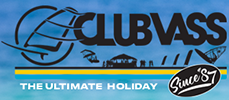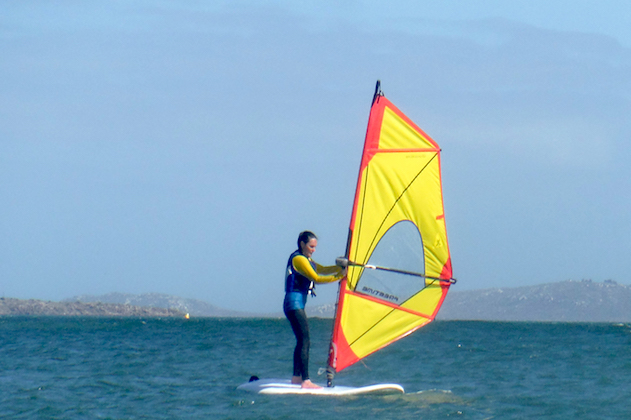Janine Avery from Planet Windsurf tells us of her experience of learning to windsurf in the highly versatile destination of Langebaan, around 120kms north of Cape Town, South Africa. – “I am a sailor, that’s my claim to fame as far as water sports are concerned. But I knew when I took a job at Planet Windsurf Holidays that I would have to broaden my horizons to a sail and a water sport of a slightly different kind. And so it came to be that I headed down the coast from my picturesque home of Cape Town to the wide expense of blue that is South Africa’s Langebaan lagoon to learn to windsurf at the Cape Sports Centre.
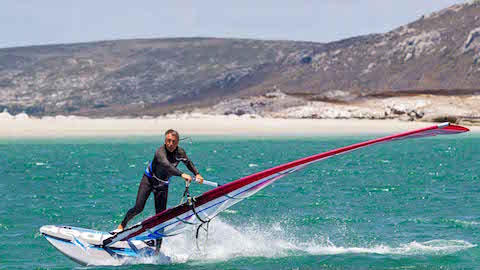
I had been warned that the experience would be frustrating, I had been told that I would probably fail to tack and that turning around was best done by dropping the sail into the sea, swimming breathlessly while trying to maneuver the board and then flicking the sail over the board and attempting, but most likely failing, to pick it up on the other side.

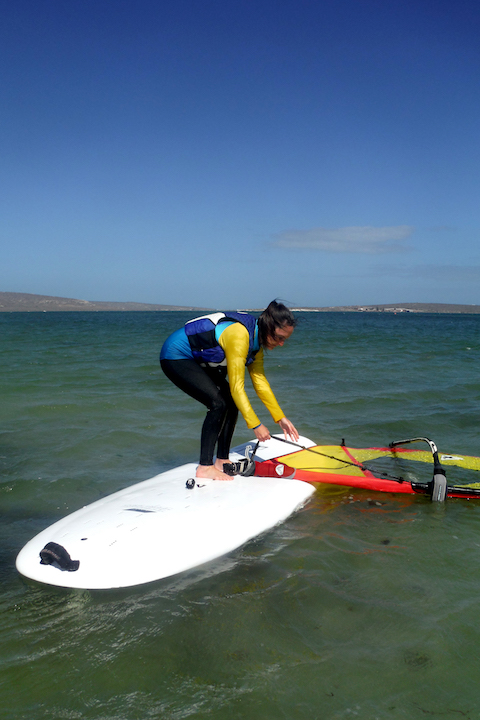
Needless to say I think there is definitely a perception that windsurfing is difficult to learn, and while I think this may have been the case when my dad first tried and spent hours treading water I was pleasantly surprised that the very early learning stages were not as difficult as I had imagined. The equipment has come on leaps and bounds in recent years and really makes the beginning stages a pleasant experience. I pictured myself doing a lot of swimming but am happy to say I spent less time in the water than I had originally thought I would. I was up and riding on my first try and if my fellow sailors could have seen me they probably would have been rolling with laughter at my tiny sail and buoyant board, but I felt as if I was flying along!
I spent the first couple minutes with my instructor from the Cape Sport’s Centre going through the basics on the beach before taking to the water. As I have the sailing background, I was lucky in that I already had a firm understanding of wind direction, conditions, and sailing angles so we were able to whiz through the theory pretty quickly, whereas for a complete novice this section might have taken longer. Once I had got the knack of increasing and decreasing power to the sail and had been shown how to sail upwind and downwind, which involves a fair level of control and stability in stance and movement, I was on the water and giving it a go. The Cape Sports Centre doesn’t have a training simulator but there is no real need for it due to the great conditions in Langebaan.


Langebaan is the perfect place to learn to windsurf as it gives you a protected lagoon environment with a consistent wind but when you are ready to venture out, the massive area provides a variety of sheltered and more windy spots, flat water and waves for as your skill level progresses. The water is also fairly shallow for some distance in the learning area, allowing my coach to always remain close to me. This allowed me to ride with confidence and meant I could easily stand up and take a breath when necessary.
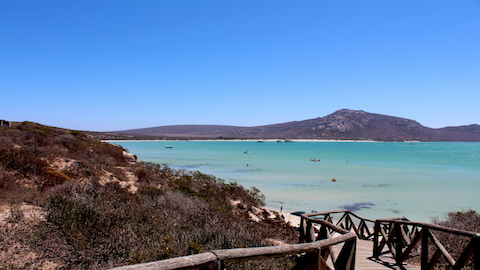

Perhaps it was the Greek instructor, the chilled out vibes or the beginner’s board with its mini centreboard, but I felt a little bit like a windsurfing master by the time my two hour lesson was done.

However, in all those warnings, the one thing I wasn’t told was how tiring it would be! If you decide to learn with a friend, or just give it a go with the wrong equipment or a sail that is too big or too heavy, then I would imagine that you definitely have your work cut out for you because even with the right equipment my little ‘learn to windsurf’ session sure did knock the wind out of me. I went in guns placing, using all my energy to hoist myself up, effortlessly sailing through the waves, and tacking on the first try, like a pro. However my beginner’s luck did begin to wane as the wind picked up and my arms and legs screamed to return to my comfortable bed and even through a smaller sail was provided, my body was failing me. I can understand why the progress from beginner to intermediate and then on to advanced level takes many years of practice, patience and time on the water. I can’t wait for next time and look forward to learning how to use a harness and master the beach start!
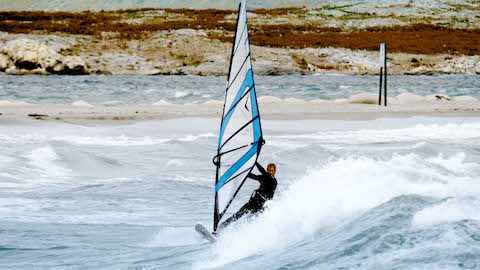 Fun wave conditions outside the lagoon.
Fun wave conditions outside the lagoon.

Quick tips for those who want to learn how to windsurf
– Do a lesson with a professional instructor at a good windsurf centre. The wrong equipment and instruction can end up doing you more harm than good. Quality, modern equipment offers much more stability and is light and easy to work with, so you end up progressing much quicker than you would on your friend’s board. You will also spare yourself hours of frustration and arguments with your mates who haven’t been trained in teaching someone the best techniques to get started!
– Allow yourself enough time for breaks, rests and short spurts of sailing. Learning to windsurf is tiring and a few hours solo practice is really necessary for progression. It is also nice to be able to rest for an hour or two before giving it another go so you need the freedom to use the equipment when and as you like and not worry about the clock. I recommend booking a windsurfing holiday – this will allow you a relaxed week in which you can learn at your own pace and really take the time to progress and enjoy it.
– Pick the right spot. The right location is as vital to your success as using the right equipment. A lagoon with flat water, no shore break and a shallow area is perfect for learning to windsurf and a destination with consistent wind will minimize frustrations. Langebaan was ideal!
– Remember to enjoy it! I was concentrating so hard I almost forgot to admire my surroundings, the wind whipping past me and the seal nipping beneath my board!”
Check out the Gallery of Langebaan centre, marina and lagoon below.

